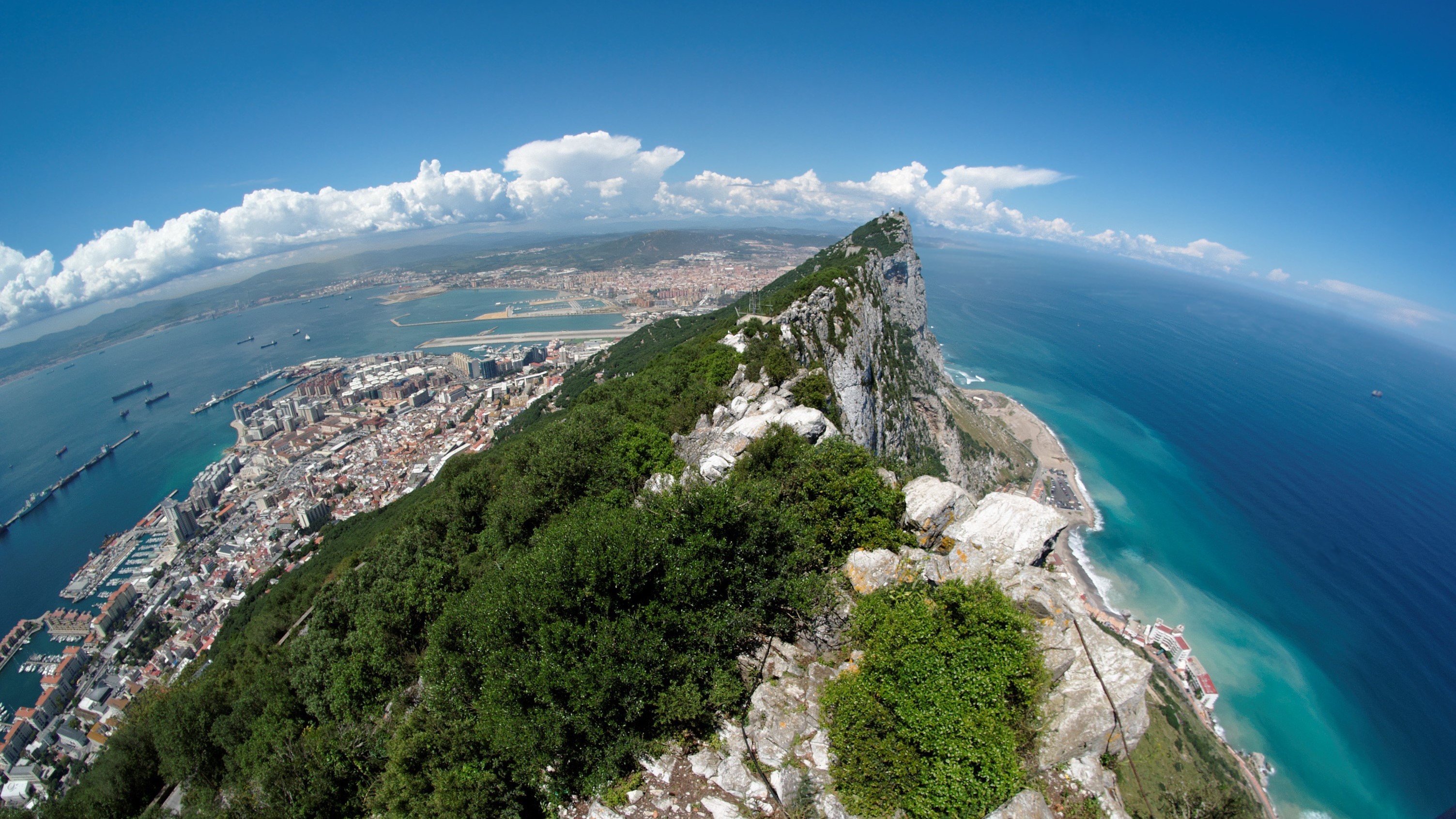Bizarre 'Levanter' cloud billows off Rock of Gibraltar in breathtaking time-lapse video
The unusual formation is known as a "banner cloud."
An unusual cloud formation, known locally as a "Levanter," was recently captured in exquisite detail as it appeared to flow off the peak of the Rock of Gibraltar, a monolithic peak located in the British overseas territory of the same name in southern Europe.
The Gibraltar Met Office captured the new time-lapse video on Aug. 24 on the runway at Gibraltar International Airport and shared the breathtaking scene on Twitter. In the sped-up footage, the billowing cloud appears to form out of thin air around the peak of the 1,398-foot-tall (426 meters) Rock of Gibraltar, which is home to Europe's only wild monkey population, a group of around 300 Barbary macaques (Macaca sylvanus), according to the Gibraltar tourism website.
The bizarre formation is known as a "banner cloud," which is a type of orographic cloud, meaning it is created due to the shape of the land below it, according to the U.K. Met Office. Banner clouds are birthed when strong winds blow moisture-rich air against a hill or mountain, forcing the air to lift toward the peak. As the air reaches the summit, it cools down, causing the water vapor to condense into a cloud, which either hangs, stationary, around the peak or, in the case of the new video, gets blown away by the wind, according to the Met Office.
The Rock of Gibraltar is well suited to spawning banner clouds because it catches a regularly occurring wind known as the Levant, an easterly gust that blows westward through the Strait of Gibraltar, off southern Spain. Locals have, therefore, nicknamed the cloud formations "Levanters."
Related: Striking bull's-eye-shaped clouds form above erupting La Palma volcano
There is no publicly available data on how rare Levanter clouds are in Gibraltar nor when they are most likely to form, but the Levant wind is most prevalent between June and October, according to the Royal Meteorological Society in the U.K. However, when the Levant wind forms from a southeasterly direction instead of a more common northeasterly origin, its gusts are normally dry and do not contain the necessary moisture needed to create banner clouds, according to MeteoGib, a private Gibraltar-based weather company.
But the Levanter clouds do come around often enough to inspire some comical cloud spotting: In recent times, locals have taken to social media to share funny images of Levanter clouds overlaid with doodles to depict what animals the banner clouds look like as they hang over the Rock of Gibraltar, some of which were tweeted by MeteoGib on Aug. 20.
Get the world’s most fascinating discoveries delivered straight to your inbox.
Thanks to @Gibbothegreat for today's idea, now added to the MeteoGib #Gibraltar #Levanter #Cloud #Art 🤣🤣🦕 pic.twitter.com/F4rZChrPs7August 20, 2022
Levanter clouds can also create contrasting climatic conditions on either side of the Rock of Gibraltar. During summer, Levanter clouds can act as a kind of lid that traps hot humid air on the Western side of the mountain for several days, which can aggravate conditions such as asthma and arthritis, according to MeteoGib.
In the 1800s, the humid conditions caused by a Levanter were blamed for an outbreak of yellow fever. However, later research showed the real culprits were mosquitoes, which would have struggled to fly around in such humid conditions, meaning this particular Levanter actually may have stopped the spread of the disease and saved lives, according to MeteoGib.
Originally published on Live Science.

Harry is a U.K.-based senior staff writer at Live Science. He studied marine biology at the University of Exeter before training to become a journalist. He covers a wide range of topics including space exploration, planetary science, space weather, climate change, animal behavior and paleontology. His recent work on the solar maximum won "best space submission" at the 2024 Aerospace Media Awards and was shortlisted in the "top scoop" category at the NCTJ Awards for Excellence in 2023. He also writes Live Science's weekly Earth from space series.
 Live Science Plus
Live Science Plus







